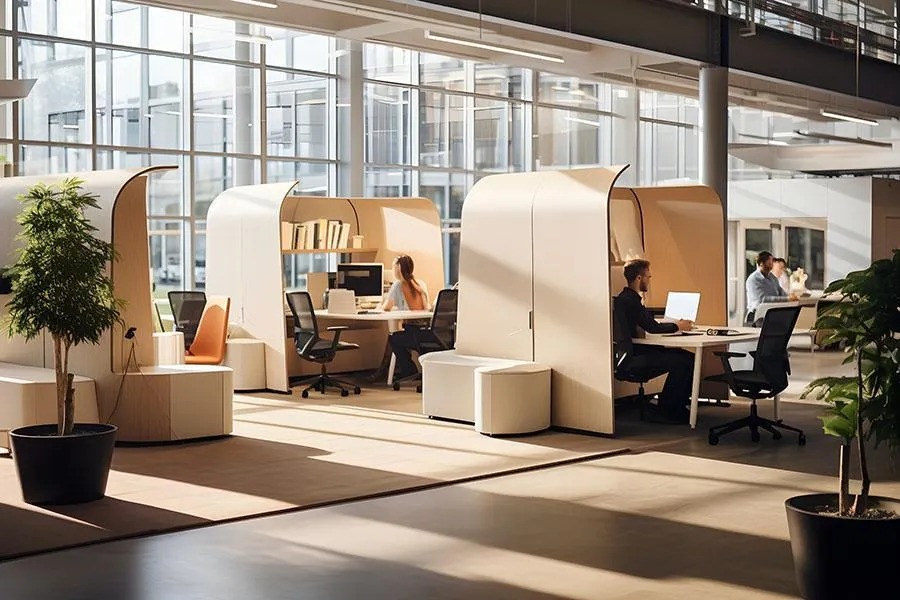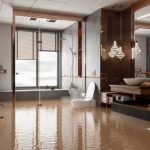Introduction:
In the world of business, the office space is not just a physical location; it’s a reflection of the company’s culture, values, and efficiency. A well-designed commercial office can enhance productivity, boost employee morale, and leave a lasting impression on clients and visitors. As general contractors, understanding the nuances of commercial office design is essential to creating functional and aesthetically pleasing work environments.
Commercial office design encompasses a wide range of elements, including layout, furniture selection, lighting, color scheme, and technology integration. Each aspect plays a crucial role in shaping the overall ambiance and functionality of the workspace. With the shift towards remote work and hybrid office models, the significance of well-designed office spaces has only increased. Companies are now focusing on creating environments that foster collaboration, creativity, and employee well-being.
The Evolution of Commercial Office Design
Over the years, commercial office design has evolved significantly to adapt to changing work trends and technologies. Traditional cubicles and closed-off offices have given way to open floor plans, flexible workstations, and collaborative spaces. The emphasis is now on creating versatile environments that cater to different work styles and preferences. Additionally, sustainability and eco-friendliness have become integral aspects of modern office design, with companies prioritizing energy-efficient systems and sustainable materials.
Key Elements of Effective Commercial Office Design
Successful commercial office design strikes a balance between functionality, aesthetics, and employee comfort. Here are some key elements to consider:
1. Space Planning and Layout
Effective space planning is the foundation of a well-designed office. It involves optimizing the layout to maximize useable space, minimize clutter, and promote smooth traffic flow. Open floor plans are popular for promoting communication and collaboration, but it’s essential to include private areas for focused work and meetings.
2. Furniture Selection
Choosing the right furniture is crucial for creating a comfortable and ergonomic workspace. Invest in quality desks, chairs, and storage solutions that support good posture and facilitate movement. Consider flexible furniture options that can adapt to different tasks and configurations.
3. Lighting Design
Proper lighting is essential for enhancing productivity and reducing eye strain. Incorporate a mix of natural light, ambient lighting, and task lighting to create a well-lit environment that accommodates various activities. Dimmable lights and lighting controls can help employees adjust the brightness according to their preferences.
4. Color Scheme and Branding
The color scheme of an office can have a significant impact on mood and productivity. Choose colors that align with your brand identity while creating a welcoming and inspiring atmosphere. Consider incorporating accent colors and branding elements to reinforce company culture and values.
5. Technology Integration
In today’s digital age, technology plays a vital role in office design. Incorporate modern amenities such as wireless charging stations, video conferencing facilities, and smart automation systems to enhance efficiency and connectivity. Ensure that the office layout accommodates IT infrastructure and equipment seamlessly.
6. Wellness Initiatives
Employee well-being should be a priority in commercial office design. Integrate wellness initiatives such as standing desks, indoor plants, breakout areas, and wellness rooms to promote physical and mental health. Create spaces that encourage relaxation, mindfulness, and social interaction.
Conclusion: Creating Inspiring Work Environments
In conclusion, commercial office design is a multifaceted endeavor that requires careful planning, creativity, and attention to detail. As general contractors, we play a crucial role in bringing our clients’ vision to life while ensuring functionality, aesthetics, and employee satisfaction. By incorporating the key elements discussed above, we can create inspiring work environments that foster productivity, collaboration, and well-being. Let’s continue to innovate and adapt to the evolving needs of the modern workplace, shaping the offices of tomorrow.





